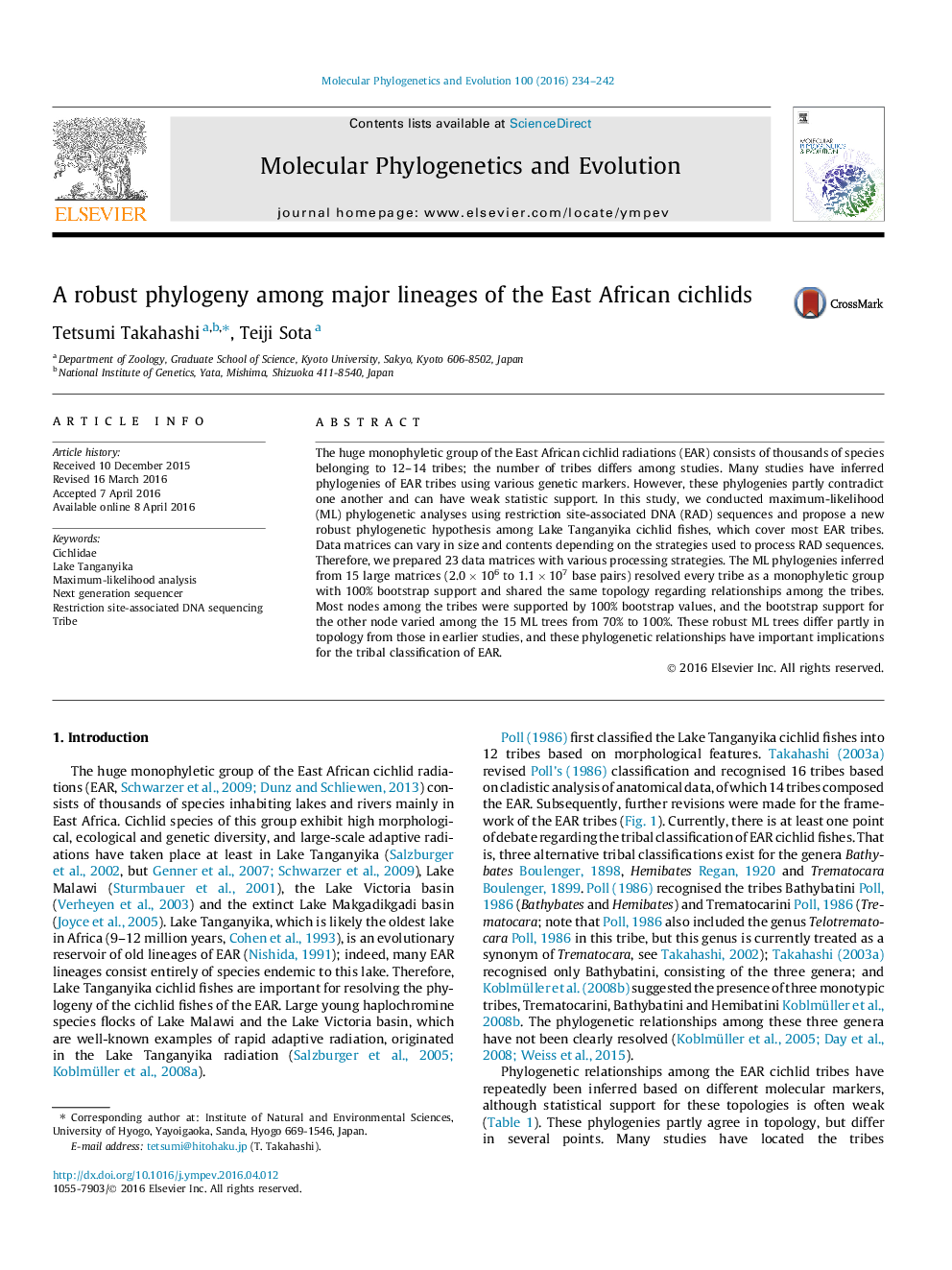| Article ID | Journal | Published Year | Pages | File Type |
|---|---|---|---|---|
| 2833665 | Molecular Phylogenetics and Evolution | 2016 | 9 Pages |
•We inferred phylogenetic relationships among major East African cichlid lineages.•Maximum-likelihood trees were generated from RAD sequence data.•All tribes examined were resolved as monophyletic with 100% bootstrap support.•Relationships among tribes were resolved with high statistic support.
The huge monophyletic group of the East African cichlid radiations (EAR) consists of thousands of species belonging to 12–14 tribes; the number of tribes differs among studies. Many studies have inferred phylogenies of EAR tribes using various genetic markers. However, these phylogenies partly contradict one another and can have weak statistic support. In this study, we conducted maximum-likelihood (ML) phylogenetic analyses using restriction site-associated DNA (RAD) sequences and propose a new robust phylogenetic hypothesis among Lake Tanganyika cichlid fishes, which cover most EAR tribes. Data matrices can vary in size and contents depending on the strategies used to process RAD sequences. Therefore, we prepared 23 data matrices with various processing strategies. The ML phylogenies inferred from 15 large matrices (2.0 × 106 to 1.1 × 107 base pairs) resolved every tribe as a monophyletic group with 100% bootstrap support and shared the same topology regarding relationships among the tribes. Most nodes among the tribes were supported by 100% bootstrap values, and the bootstrap support for the other node varied among the 15 ML trees from 70% to 100%. These robust ML trees differ partly in topology from those in earlier studies, and these phylogenetic relationships have important implications for the tribal classification of EAR.
Graphical abstractFigure optionsDownload full-size imageDownload as PowerPoint slide
